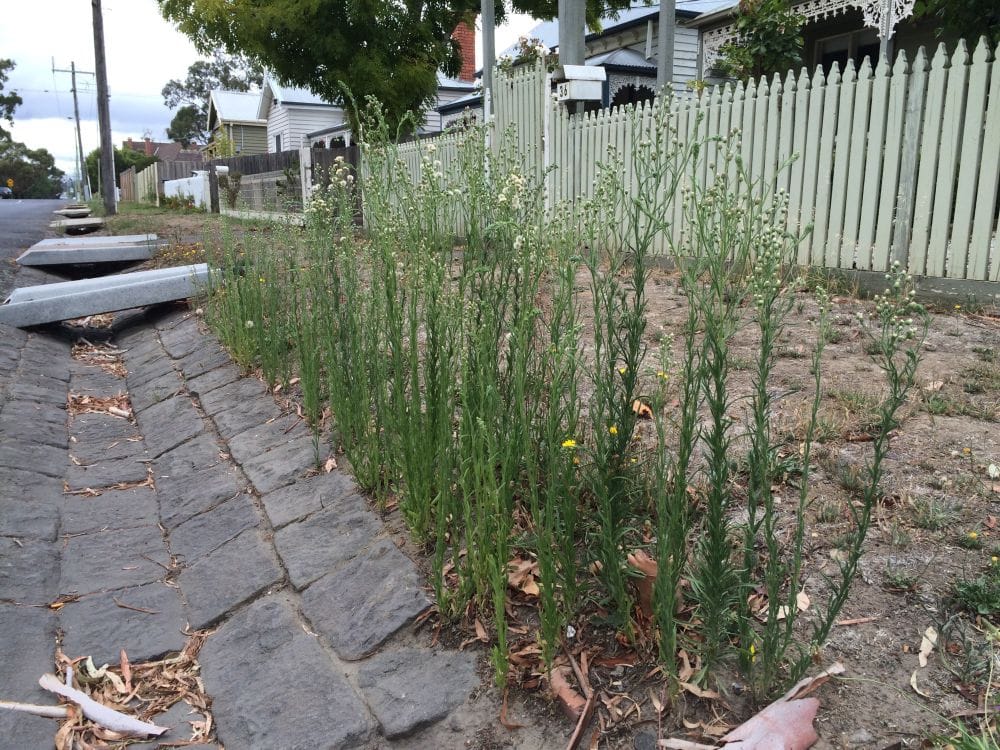
UPDATE: Farmers across the Hawkesbury region are urgently combating a rapidly spreading weed known as fleabane, which has developed resistance to glyphosate, a widely used herbicide in Australian agriculture. This invasive species is wreaking havoc on local crops and pastures, threatening the livelihoods of numerous producers.
Experts warn that fleabane’s resilience is costing farmers both time and money. The weed, which can produce over 100,000 tiny seeds per plant, is now flourishing across paddocks, roadsides, and river flats in and around Hawkesbury. Horticulturalist Phil Burkitt highlighted the urgency of the situation, stating, “Fleabane has become one of the most difficult weeds to manage on-farm. Resistance to glyphosate means farmers need to combine multiple control strategies — not just rely on spraying.”
Originally from the Americas, fleabane belongs to the Conyza genus, with several species naturalized in New South Wales. The most prevalent, Flaxleaf fleabane (Conyza bonariensis), can grow up to one meter tall and is characterized by its grey-green, hairy leaves and whitish flowers. Other species like Tall fleabane (Conyza sumatrensis) can reach heights of two meters and Canadian fleabane (Conyza canadensis) present further challenges.
Local farmers report a significant uptick in fleabane’s spread, particularly along fence lines and across properties in recent seasons. The weed’s ability to establish deep taproots complicates removal, and its seedbank ensures it can return year after year if left unchecked.
“It’s not just a problem for farmers — it’s turning up in native regrowth areas too,”
said Burkitt. “We’re seeing it compete with native species along the river and in revegetation sites, so community control efforts are really important.”
To combat this persistent threat, local growers are advocating for an integrated weed management approach. This strategy includes a combination of targeted herbicides, cultivation, competitive cropping, and maintaining ground cover to thwart fleabane from setting seed.
Authorities are monitoring the situation closely, as local regeneration groups report the weed’s encroachment into bushland and river corridors. The urgency of addressing this invasive species cannot be overstated, as it poses risks not only to agriculture but also to biodiversity.
For further information on controlling invasive plants and biosecurity measures, visit the DPI New South Wales website, which provides resources for identifying, reporting, and managing weeds.
Farmers and agricultural experts are calling for immediate action to implement these strategies and mitigate the impact of fleabane. The situation remains dynamic, and stakeholders are urged to stay informed as developments unfold.






